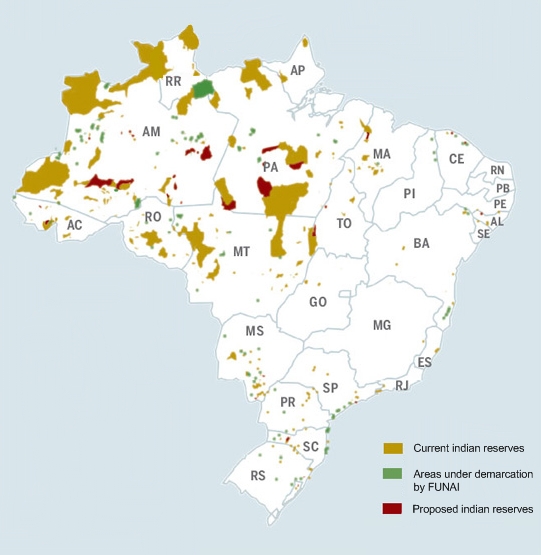Two important dates are celebrated in Brazil in April. They are Indian Day and Tiradentes, respectively commemorated on April 19th and 21st.
But why do we celebrate these dates?
 Indian Day (also known as Native Day; in Portuguese known as Dia do Índio), was created by President Getulio Vargas by a decree law in 1943, and recalls the day (April 19) in 1940, in which several indigenous leaderships of the Americas decided to attend the First Inter-American Indian Congress, held in Mexico.
Indian Day (also known as Native Day; in Portuguese known as Dia do Índio), was created by President Getulio Vargas by a decree law in 1943, and recalls the day (April 19) in 1940, in which several indigenous leaderships of the Americas decided to attend the First Inter-American Indian Congress, held in Mexico.
Nowadays most part of the cities does not celebrate the date, however it is very common for schoolchildren across Brazil to dress up like Natives and visit Museums to learn more about the first Brazilians. It is common to see celebrations in states with relatively huge indigenous population, such as Mato Grosso, Mato Grosso do Sul, Pará, Goiás, Rondônia and Amazonas.
 The National Indian Festival is held yearly in Bertioga, São Paulo to celebrate the Indian Day. It is considered the largest indigenous cultural event in the world, which takes place in April 19.
The National Indian Festival is held yearly in Bertioga, São Paulo to celebrate the Indian Day. It is considered the largest indigenous cultural event in the world, which takes place in April 19.
The festival is seen as an opportunity to learn about Brazilian indigenous peoples, since traveling to most tribal areas and reservations in Brazil is restricted and must be authorized by FUNAI, the National Indian Foundation. It is also seen as an opportunity for Native Brazilians to perform celebrations, such as indigenous rituals, body art, music, dance, food, crafts and sports.
***
Joaquim José da Silva Xavier, known as Tiradentes, was a leading member of the Brazilian revolutionary movement known as the Inconfidência Mineira whose aim was full independence from the Portuguese colonial power and to create a Brazilian republic. When the plan was discovered, Tiradentes was arrested, tried and publicly hanged. Since the 19th century he has been considered a national hero of Brazil and patron of the Polícia Militar de Minas Gerais (Minas Gerais Military Police).
On April 21, 1792 (today the date of a national holiday in Brazil), Tiradentes was hanged in Rio de Janeiro, in the plaza today named Praça Tiradentes. His body was quartered into several pieces. With his blood, a document was written declaring his memory infamous. His head was publicly displayed in Vila Rica and pieces of his body were exhibited in the cities between Vila Rica and Rio to terrorize the populace and those who had sympathized with Tiradentes' ideas of independence.
On April 21, 1792 (today the date of a national holiday in Brazil), Tiradentes was hanged in Rio de Janeiro, in the plaza today named Praça Tiradentes. His body was quartered into several pieces. With his blood, a document was written declaring his memory infamous. His head was publicly displayed in Vila Rica and pieces of his body were exhibited in the cities between Vila Rica and Rio to terrorize the populace and those who had sympathized with Tiradentes' ideas of independence.
He began to be considered a national hero by the republicans in the late 19th century, and after the republic was proclaimed in Brazil in 1889 the anniversary of his death (April 21) became a national holiday.
As of now there is a city in the state of Minas Gerais bearing his name and major avenues and streets in countries like the Dominican Republic.

